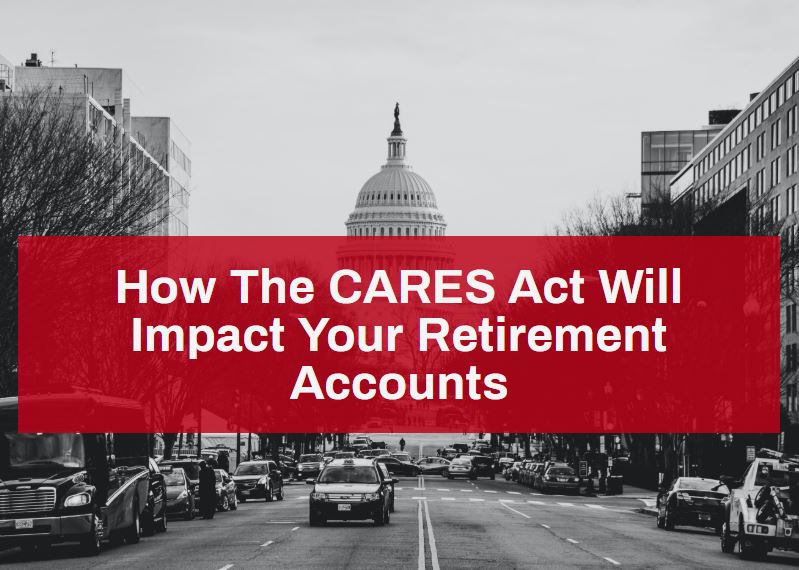
The Coronavirus Aid, Relief, and Economic Security (CARES) Act has gotten a lot of attention because it promises stimulus checks and expanded unemployment for millions of Americans, but there’s a lot more to the 880-page law than that. It contains several provisions that affect retirement savings, including some that give you immediate, penalty-free access to your funds.
We’ll explain the key rule changes related to your retirement accounts below, but know that just because these changes are now in effect doesn’t mean you have to — or should — change how you handle your retirement savings.
The early withdrawal fee has been suspended
Usually, you pay a 10% early withdrawal penalty if you take money out of your retirement accounts before age 59 1/2, unless you qualify for certain exceptions, like a first-home purchase or a qualifying educational expense. The CARES Act adds another exception for those who have been significantly affected by COVID-19. In order for your distribution to qualify, you must meet one of the following criteria:
- You, your spouse, or your dependent has been diagnosed with COVID-19.
- You’ve experienced financial hardship as a result of being quarantined, furloughed, or laid off or having your working hours reduced due to COVID-19.
- You are unable to work due to lack of child care caused by COVID-19.
- You’re a business owner who had to close or cut back your hours due to COVID-19.
If you meet one of the above criteria, you can take up to $100,000 from your retirement savings, no matter your age, without penalty, though you may still owe taxes on that money if it comes from a tax-deferred account. See below for more details. You can make several separate withdrawals, but together, they may not exceed $100,000.
You have three years to put your distributions back without owing taxes
Under the new law, you can avoid paying taxes on your COVID-19-related 401(k) or IRA distributions if you put the money back in your account within three years from the date you withdrew it. If you make several withdrawals, you have three years from the date of each withdrawal to put the money back where it belongs. It doesn’t have to go back into the same retirement account it came from, though. You can place it in a different tax-deferred account if you choose.
It doesn’t matter how you pay it back over the three-year period. You can save up and deposit it in a lump sum or pay it back in installments over time. If you’re unable to pay it all back, the outstanding balance at the end of three years will be considered a distribution and it will be added to your taxable income for that year, raising your tax bill.
Think carefully before you make any retirement plan withdrawals. You might have every intention of paying the money back within three years, but we don’t know the long-term effects this pandemic will have on the economy, and you might not have the funds to replenish your retirement account by the deadline. You should only tap your retirement savings as a last resort, and even then, withdraw as little as possible.
401K loan limits are doubled
The CARES Act doubles the maximum 401K loan from $50,000 to $100,000. This option might be preferable if it’s available to you because 401K loans give you a longer repayment time — up to five years in most cases. You must pay back what you borrowed plus interest, but that interest goes into your retirement savings, so it helps you. You must pay back what you owe by the deadline, or it’s considered a distribution and taxed accordingly.
Not all 401K s allow loans, so check with your plan administrator to see if this is an option for you if you’re interested. If it’s not, you can still take a distribution and repay it within three years, as explained above.
Adults 72 and older don’t have to take a required minimum distribution
The government mandates adults 72 and older take a required minimum distribution (RMD) from all of their retirement accounts except Roth IRAs. It’s how the government gets its cut of your savings before you die. The exact amount depends on how much you have in your account and your age.
RMDs might force some older adults to withdraw more money from their savings than they’d planned on. This can be especially devastating right now when the stock market — and retirees’ investment portfolios — have taken such a hit due to COVID-19.
The CARES Act enables these individuals to skip their RMD for 2020. They’re still free to withdraw as much money as they choose from their retirement accounts, but they aren’t obligated to do so.
These rule changes mean easier access to your retirement savings, but that doesn’t mean withdrawing your funds is the right decision. You’ll probably be taking a loss by withdrawing funds when your investments are down, and you could be hampering the long-term growth of your savings, not to mention potentially sticking yourself with a high tax bill if you’re unable to pay your distributions back within three years. Try to make ends meet with your stimulus check, unemployment, and other sources before falling back on your retirement savings.